Understanding and analysis of data is very crucial for the success of a business. In today’s environment, business strategies and processes are more dependent on the analytics provided based on electronic and digital data. Understanding and analysis of large volumes of digital data is a challenging task. In this scenario, Business Intelligence tools becomes very important, which helps us to analyze raw data and provide actionable insights to businesses.
Key Features of Business Intelligence (BI) Tools
In order to make any decision based on data, managers need assistance from such software applications (programs) known as Business Intelligence (BI) Tools. These software applications allow organizations to collect, analyze and present information in reports and graphical formats, which helps organizations to make informed decisions. Business Intelligence Tools helps in transformation of raw data into meaningful insights that can lead to an improvement in organization’s processes and overall performance.These tools helps in understanding of current trends, patterns or deviations from norms.
There are multiple key features of Business Intelligence Tools. Some of these features are very important for good data analysis. Most of the BI tools(applications) has integration for these features.
- Data Collection and Integration:: Business Intelligence (BI) tools collect and integrate data from multiple sources and in multiple formats & structures, including databases, spreadsheets, internal and external systems and cloud services. This helps in unification of data and comprehensive analysis on unified data can be performed.
- Data Visualization: Data Visualization is very important and powerful features of BI tools. This features helps to present complex data into User Interface (UI) and visual formats like charts, graphs and patterns. This helps users to easily understand, interact based on the insights.
- Reporting: Advanced reporting is one of the key capabilities provided by BI tools. This helps users to generate detailed reports on specific metrics or Key Performance Indicators (KPIs). These reports can be customized, scheduled, and shared across the organization.
- Dashboards: Dashboards are the real-time overview of business performance and key business metrics. Data visualization can be integrated to show on dashboards. Dashboards can be customized based on the indivisual user’s needs and helps decision-makers to monitor performance in real time.
- Data Mining and Predictive Analytics: Data mining and predictive analytics is an advanced feature which includes Machine Learning (ML) capabilities. This help in more in-depth analysis and identify hidden patterns in the data. This also provides predictive analytics features. Some BI tools has this capability.
- Self-Service Analytics: This feature is provided with advanced BI tools. This helps non-technical users to explore data, create reports, and generate insights without extensive technical expertise.
Popular Business Intelligence (BI) Tools
There are many Business Intelligence tools that are available. These BI tools can be categorized based on the features and functionality they provide like self-serving BI tools, cloud based BI tools etc. BI tools can also categorized based on open-source and commercial software.
Now, lets explore some of the popular Business Intelligence (BI) Tools.
Tableau
In today’s time data is one of the most valuable asset for businesses. Data can be from multiple sources either electronic or digital or traditional. Every industry or organization relies on big data analytics to make informed decisions on their operations. After receiving large volumes amounts of data from different sources, it is analysed using statistics, numbers and mathematical formulas.

This analysis is presented using simple, visually attractive, comprehensible formats and interactive dashboards. Tableau is commercial software and can be downloaded from its official website tableau.com.
Tableau simplifies raw data by turning it into an interactive and easily understandable format. Even users without any technical skills or knowledge of coding can create customized dashboards with ease in Tableau. Apart from this, Tableau supports various types, forms, ranges and sizes of data which can be transformed into appealing dashboards and worksheets.
Features of tableau
Tableau helps to make dashboards that allow for interactive exploration of real time data.
- Tableau provides drag and drop functionality that is smooth enough for anyone to create visualizations without a lot of coding or technical knowledge.
- Tableau can connect with an extensive range of data sources such as spreadsheets, databases and cloud services like big data.
- Tableau facilitates timely decision-making processes by conducting real-time analysis.
- Tableau helps to create numerous types of visualization such as bar charts, line graphs, scatter plots maps and other custom calculations and metrics according to requirement.
- Tableau also provides features to share the visualizations and dashboards among teams or stakeholders.
- Tableau provides options like filters and parameters to change data that is displayed.
- Tableau integrates various tools and programming languages like R, Python and SQL. It enhances its analysis capabilities.
- Tableau has active community with many learning resources like forums, tutorials and suggestions from other users.
- Tableau is very user-friendly and easily accessible via mobile devices
PowerBI
PowerBI is a cloud-structured platform from Microsoft that aids organizations to comprehend their data visually. It makes it possible for users to generate interactive dashboards and reports by using its numerous visuals. It provide features to easily share reports and dashboards with team members and stakeholders as well.
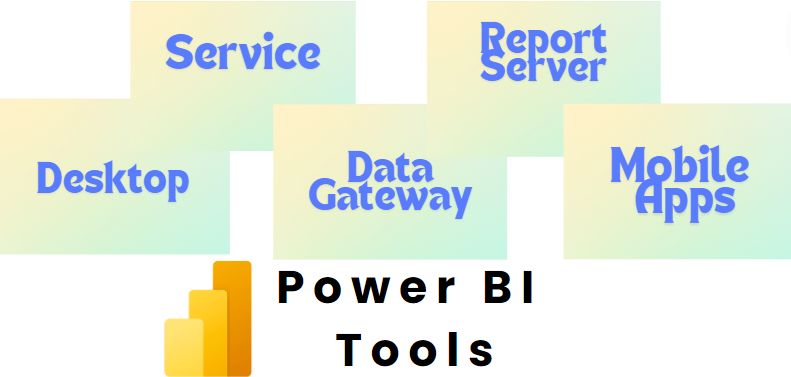
It implies that teams can work together more effectively by making choices based on data, even if they are in different locations (or remote areas). In short, We can say, Power BI Service facilitates the process of visualizing as well as sharing information and enables organizations to utilize their data more intelligently. PowerBI is a commercial product of Microsoft.
Features of PowerBI
Microsoft Power BI is a diverse set of business intelligence tools for creating complex visualizations and comprehensive reports. Important features of PowerBI are:
- PowerBI provides powerful analytical tools to help users gain valuable insights, turn data into strong components that offer ideas and innovations to solve business challenges.
- PowerBI provides data connectivity with multiple data sources and data transformation features.
- PowerBI provides data modelling techniques to identify relationship between different data sets.
- PowerBI offers Key Performance Indicators (KPIs). That can be tracked through advanced analytics in Power BI. KPIs assist in performance improvement and process optimization for an organization.
- Power BI is a data management solution that represent analytical information via interactive dashboards.
- PowerBI tools applies data mining techniques and BI technologies to determine patterns and trends within data sets and provide visualization instruments for further detailed analyses.
- Power BI encrypts data both in transit and at rest, with options for user-managed encryption keys.
- PowerBI provides strong security features, including sensitivity labeling, real-time access monitoring and ensures data safety.
- Natural Language Processing (NLP) and AI based insights are advanced features of PowerBI.
Qlik Sense
Qlik Sense is an application that was designed and released by QlikTech.
- Qlik Sense is specifically designed to get insights based on AI powered data analysis and data visualization.
- Qlik Sense is also used to create dynamic dashboards and reports based on the data extracted from different data sources.
- Qlik Sense can also be used as a working environment for both technical and non-technical users.
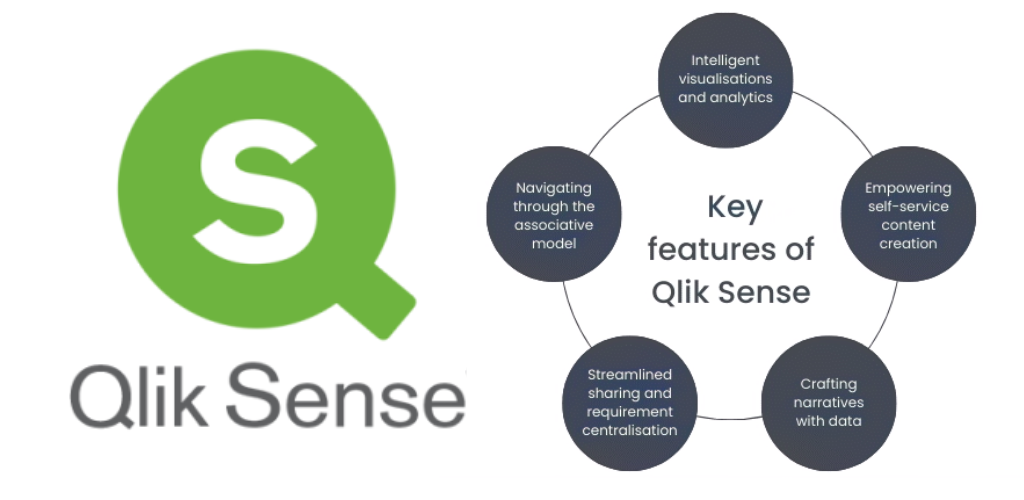
- Qlik Sense excels in providing a platform for data representation, embedding enhanced visuals and effective presentation of data.
Features of Qlik Sense
- Qlik Sense is a business intelligence and data visualization tool.
- Qlik Sense provides Associative Engine, which allows end-users to move data and visualize it on their own, independent of technical concepts like tables and indexes.
- Qlik Sense provides capabilities to visualize real-time data points interaction with deeper understanding.
- Qlik Sense provides graphical drag and drop interfaces, which are quite easy to use with no technical knowledge.
- Qlik Sense allow users an interface which interacts with different data sources regardless of data location. It helps large enterprises to use their different organizational data sources to create self-service analytics.
- Qlik Sense also include predictive analytics and data understanding capabilities, which help to get future insights.
- Collaborative features that easily enable users to share their findings across teams and organizations.
- Qlik Sense has a mix of simple, powerful design together with high collaboration
Looker
Looker is business intelligence tool provided by Google. Looker is a very useful, flexible and proven business intelligence tool for any organization intending to efficiently utilize their data. In principle, it is relevant to a business establishment that is in need of a data-driven workforce and wants to run with a business intelligence and data analytics platform. Looker helps to increase staff’s capabilities and confidence levels. Executives, data analysts and developers can achieve their goals with Looker.

- LookML is a SQL styled language used in Looker.
- Database functions once defined by technical data teams, can be utilized by business users to explore, secure, and download data in SQL.
- Looker provides BI solution enabled with machine learning models, cloud infra peers, and cutting-edge APIs.
- It provides secure data storage, easy and safe data exploration. It also provides interpretative processes in a highly flexible and dynamic environment.
Features of Looker
Looker stands out among Business Intelligence (BI) tools for several key reasons:
- Looker is entirely a cloud-based platform with lot of flexibility and all the benefits of cloud environment.
- Deploying Looker in an organizational setup is relatively easy with the process and policy implementation.
- Looker allowed developers to easily create fully interactive, customized data experiences using a set of reusable components and modules that connected with other services to build high-level, robust data products very quickly.
- Looker help product developers to analyse quickly and solve real time use cases using the Extension Framework.
- Looker offers advanced workflow system where you can create reports and distribute them on a scheduled basis based on given conditions.
- Looker has an extensive partner network. With an large third-party network ecosystem, it use case can be extended beyond a simple visualization software.
- Looker provides embedding with tools like Salesforce, Confluence, Sharepoint, and PowerPoint.
- Looker can get data from a vast variety of sources like BigQuery, SQL Server, Azure, AWS and others.
- Looker can understand many SQL dialects—you can use T-SQL, BigQuery SQL, etc.
- Looker provides drop and drag capabilities.
- Easy-to-read reports and approachable dashboards can be build with Looker.
DOMO
Domo is an integrated data analytics, business intelligence apps platform. Domo was founded in 2010 by Josh James. Domo empowers businesses to make better decisions by arming organizations with the proper tools and data-driven insights. Domo has the ability to connect to a diverse-set of data sources. Robust visualization tools empowers Domo with the ability to leverage data analytics in making informed decisions for businesses.
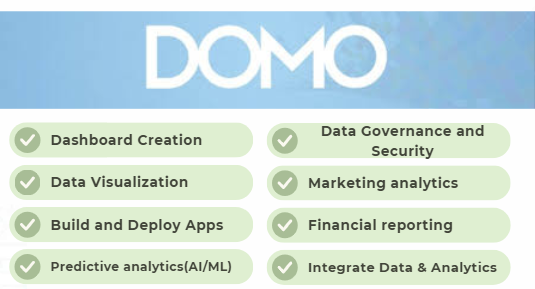
Domo is built to empower organizations, making their data much more accessible and actionable in search of better business outcomes.
Features of Domo BI Tool
- Domo connects users to a range of data sources and facilitates total integration of data through spreadsheets, databases, cloud services, or any other kind of applications.
- This allows for multi-data visualization, regarding different reports, as presented through dashboards, graphs, or charts, which simplify the understanding of the data.
- Real-time data provides the essential ingredient for effective decision-making; data is updated with automated data refresh.
- Social features make it very easy to work with others; Share insights and comments on data and work on projects right inside the platform.
- Owing to the mobile application, the user can access all data and their dashboards right from the hand-held devices while in the field.
- With Domo, you can design your custom apps according to business demand by mashing up its data with different tools available within the platform.
- Features in Advanced Analytics available within Domo allow Predictive Modelling and Machine Learning for predicting trends and patterns.
- Features, such as setting permissions and encrypting, have been integrated with compliance mechanisms in Domo to protect very sensitive data across several industries.
SAP Business Objects
SAP Business Objects (SAP BO) is top-notch solution that helps organization to gather, analyze, and visualize data from various sources. SAP Business Objects Software is one of the centralized reporting suites, and known as one of the topmost and leading BI offerings for data visualization, data sharing, and other business needs.
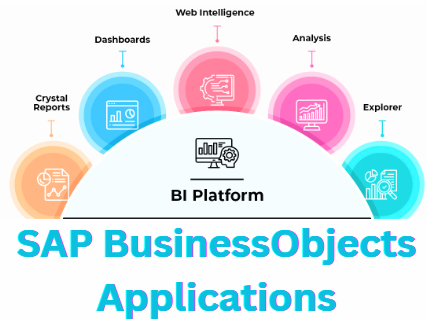
SAP Business Objects is an on-premise business intelligence on top of SAP’s Business Technology Platform. The SAP BO report guide users in finding the valuable insights from data at lightning speed.
Guiding in the right direct is very important for the success of a business. It is very important to make quick and wise decision. SAP Business Objects BI helps businesses to access, analyze, and share data mainly by generating reports and dashboards and running queries for business decisions.
Features of SAP Business Objects
- SAP BO helps in understanding data using charts, graphs, dashboards etc. which provides very interactive meaningful graphical representation of data.
- Reliable reporting and performance analysis tool that makes it easy to create, edit, and publish reports on the web.
- User can create and customize custom, interactive dashboards that provide real-time KPIs and various other metrics.
- Integrates with multiple data sources, including SAP HANA, SAP BW, and a good number of third-party databases. This allows access to all types of data for analysis.
- SAP BO has developed mobile applications where users can have reporting dashboards.
- SAP BO provide CMC or Central Management Console, a managerial tool that allows the administrator to perform different functions and management tasks.
- Through integrated tools, it enables sharing insights and analytics distribution among team members.
- Security features for enterprises, access to authorized users through role-based authentication, authentication and encryption.
- SAP BO provides APIs to extend and help integrate with other applications.
IBM Congos Analytics
IBM Cognos Analytics is a web-based integrated business intelligence suite by IBM. It provides a tool-set for reporting, analytics, score carding, and monitoring of events and metrics. It is especially designed to help organizations make informed decisions based on their data.
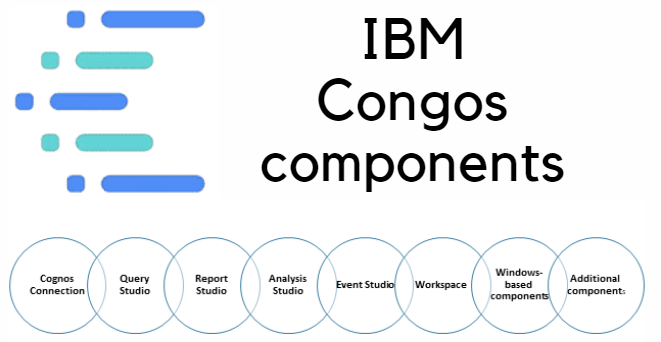
Features of IBM Congos Analytics
- Congos Analytics provides additional components like Go! Office, Go! Search, and Go! Dashboard as well which provides access to all IBM Cognos Report contents, including data, metadata, headers & footers, and diagrams.
- Congos provide predefined reports or create new content with Query Studio, Analysis Studio or Report Studio.
- Congos provides full-text search for content contained in reports, analyses, dashboards, metric information, and events.
- Using Congos we can create data models, explain and organize the data for analysis. It also provides tools for data visualizations and to create dynamic dashboards that help convey insights effectively.
- Cognos Connection is the Web portal for IBM Cognos BI, using this portal, user can search the content in the form of reports, scorecards, and agents, it can be managed, structured, and displayed.
- By using Query Studio, users can customize the layout of report and data can be filtered and sorted. It also supports formatting and creation of diagrams.
- IBM Cognos Workspace is a web-based interface that allows business users to use existing IBM Cognos content (report objects) to build interactive workspaces for insight and collaboration.
- It facilitates collaboration and sharing of reports and insights across teams also platform supports mobile devices, enabling users to access reports and dashboards on the go.
Summary
In this article, we explored various Business Intelligence Tools.
